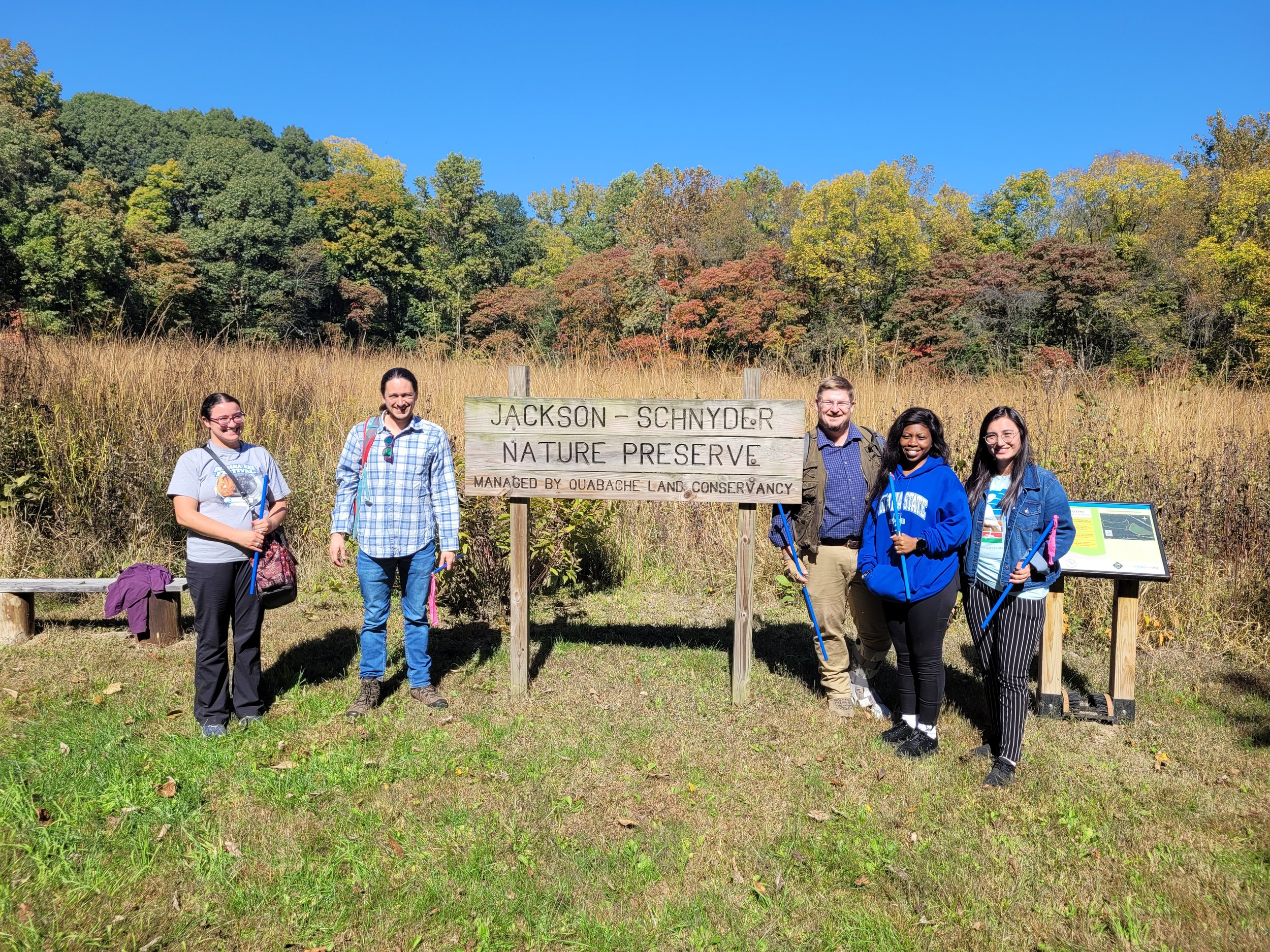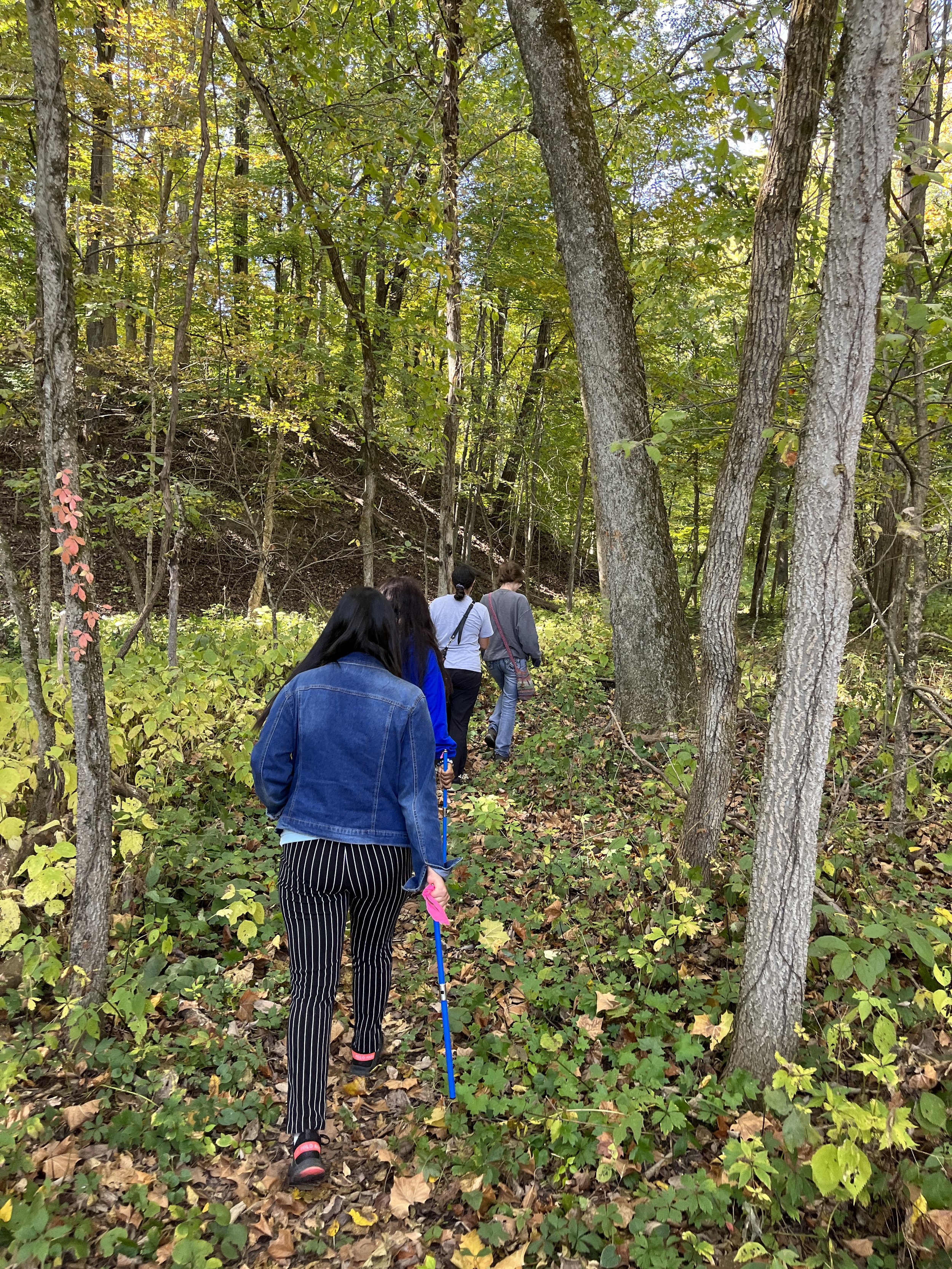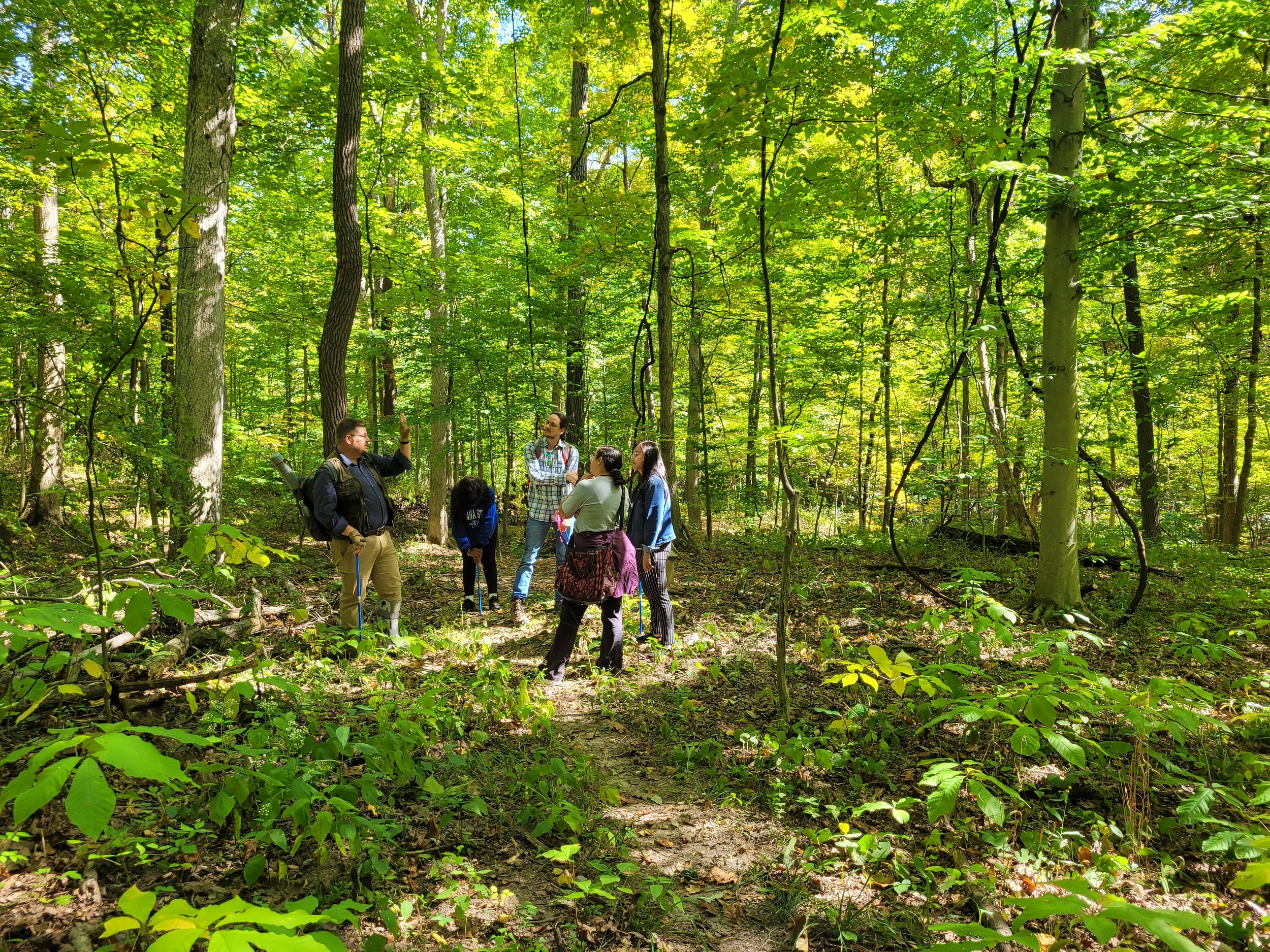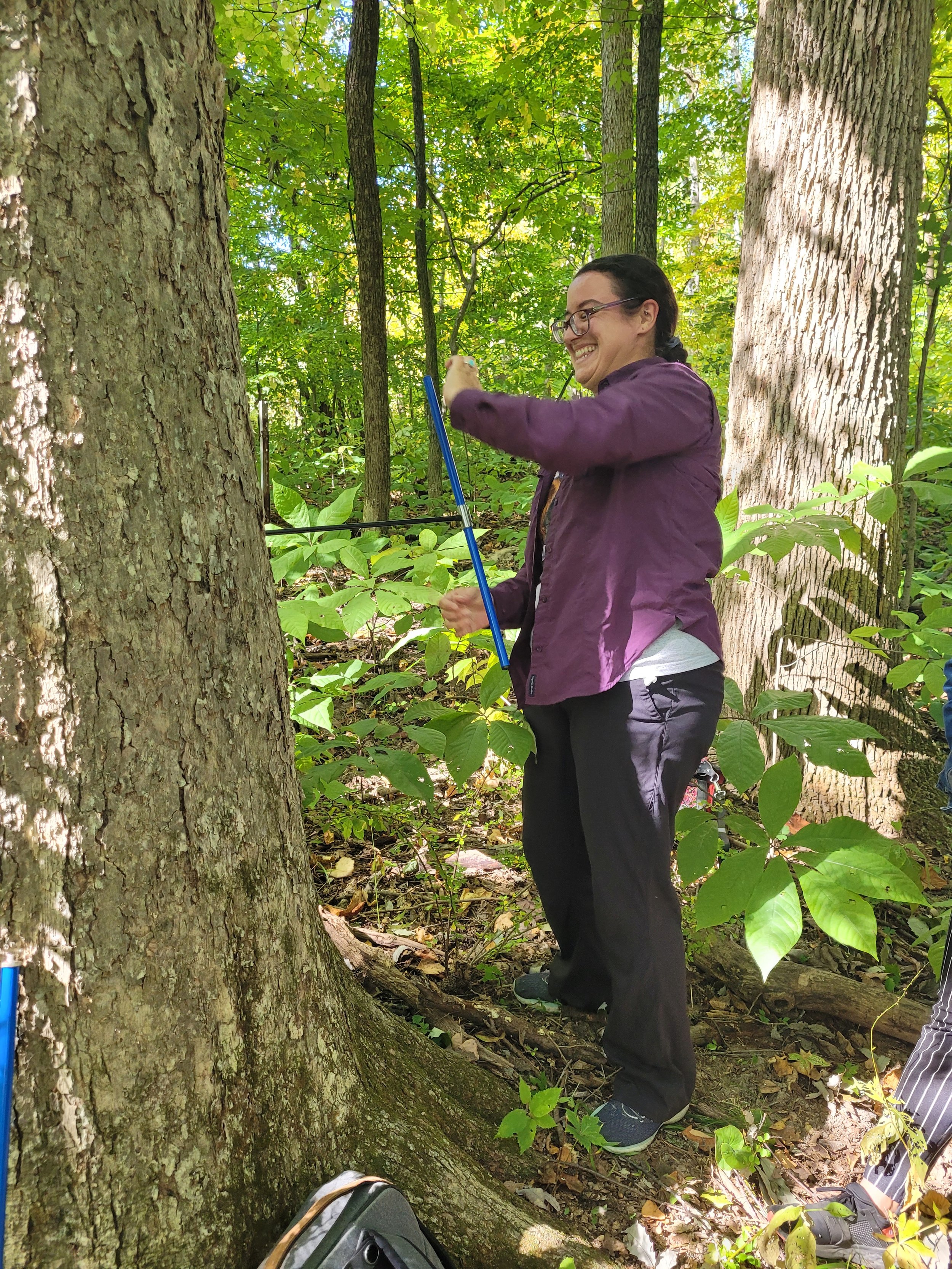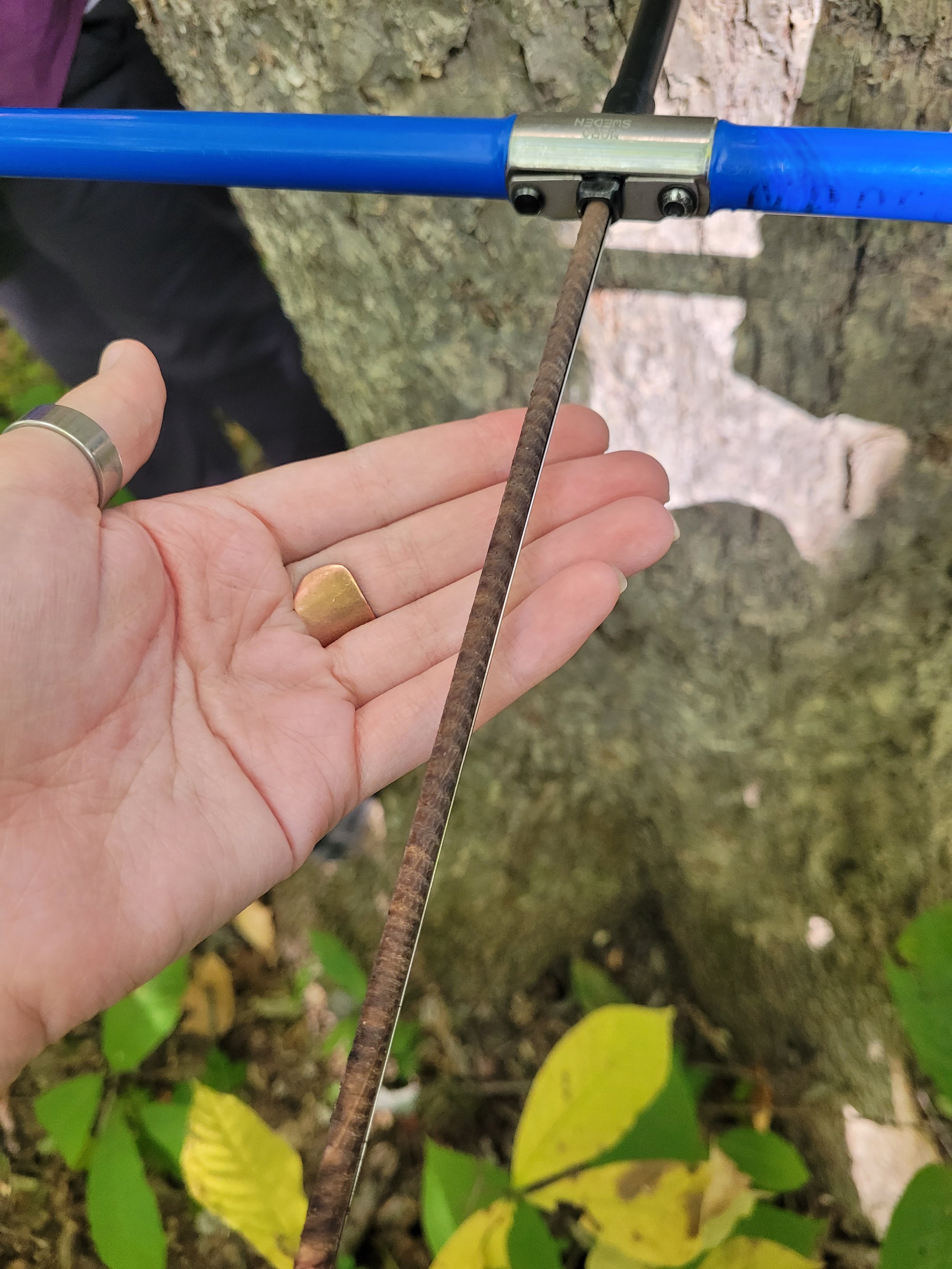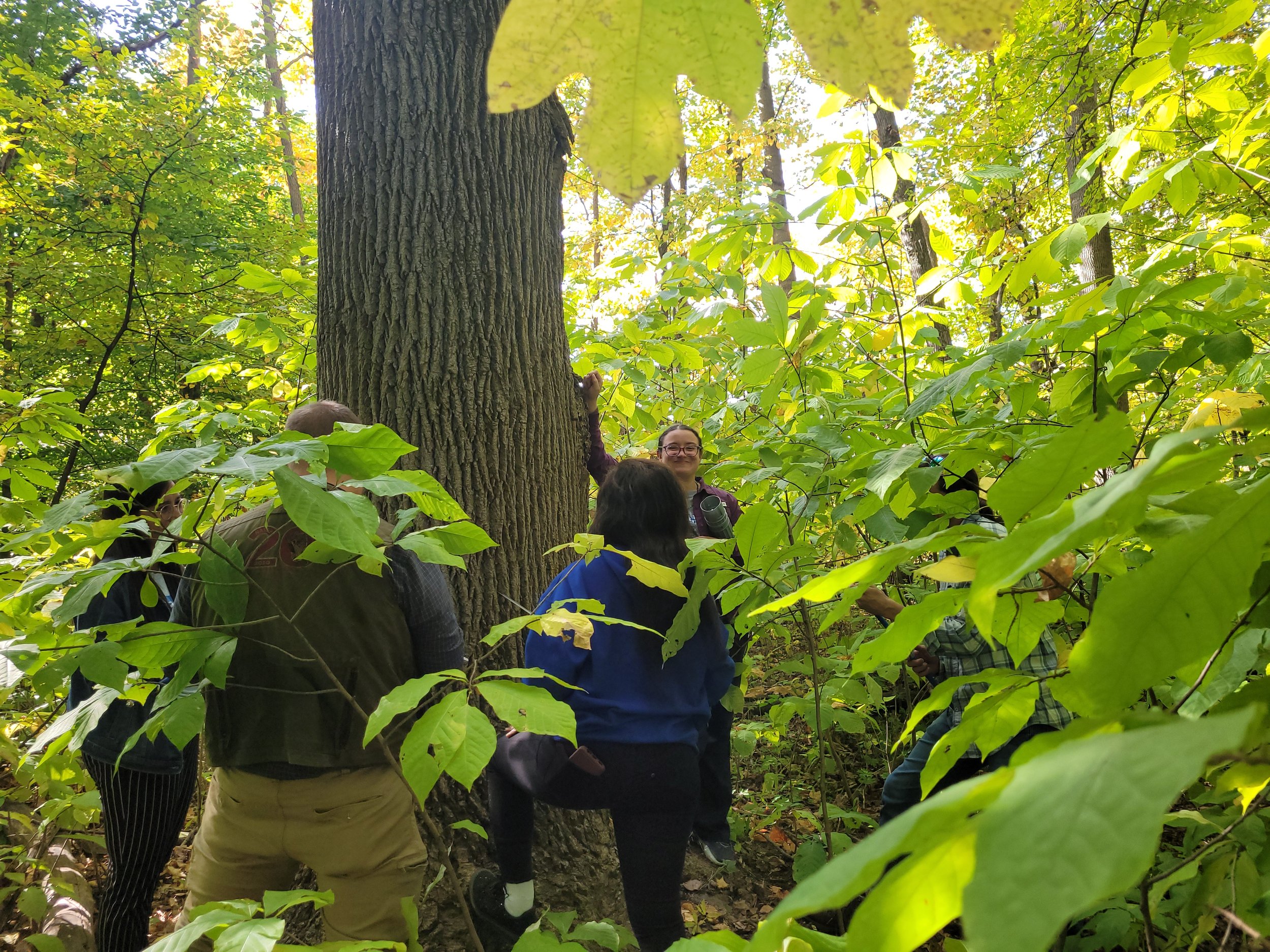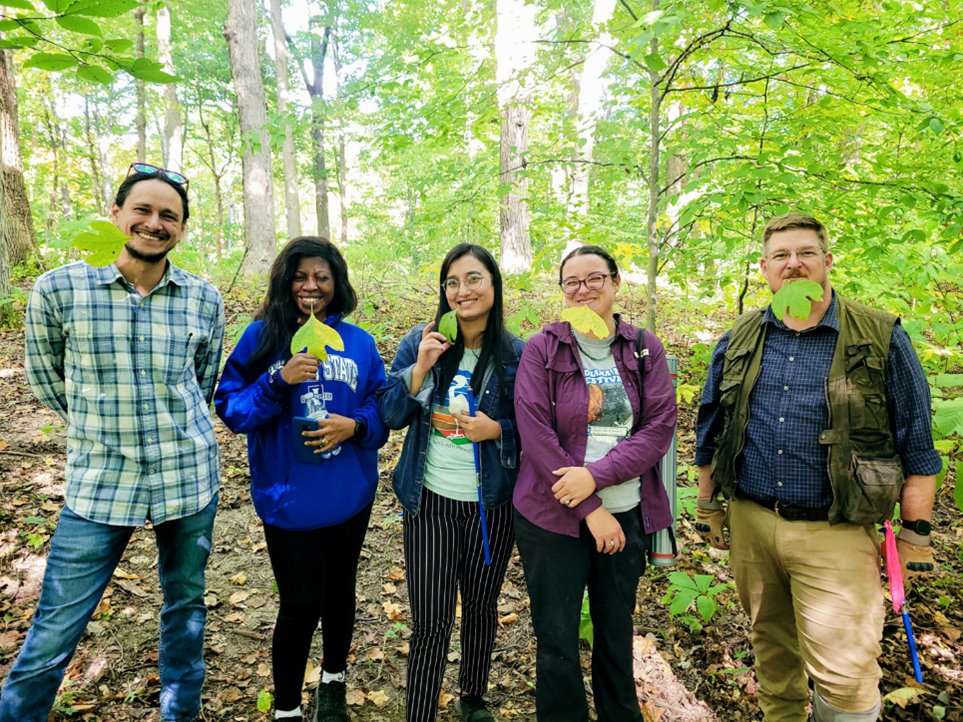Dendrochronology at Jackson-Schnyder Nature Preserve
Figure 1. Map from the AllTrails App that displays JSNP’s two loop trails – the Marion Loop (green) in the woods, and the Julius Loop (pink) that travels around the prairie restoration project.
Jackson-Schnyder Nature Preserve (JSNP) is an approximately 20-acre property in West Terre Haute, IN. The landscape can be considered in three parts – a prairie restoration project, a dryer upland forest, and a wetter lowland forest. There are two publicly accessible trails, the Marion Loop through the woods and the Julius Loop around the prairie restoration project (Fig. 1). The property is protected and maintained by Ouabache Land Conservancy to be used as an outdoor classroom for community members and students of nearby universities. With this spirit, the property was used for the dendrochronology component of Dr. James Speer’s Field Techniques class at Indiana State University (ENVI 610-001 Fall 2022). Dr. Speer taught several approaches to study different landscapes, and graduate students conducted individual research based on these techniques. During this class, a project was completed with the purpose of documenting some of the oldest trees on the landscape of JSNP.
Methods
In the field, increment borers were used to collect cores from six trees on the Marion Trail. Hoping to capture the oldest trees on the landscape, the largest trees were targeted and sampled. For each tree, diameter at breast height was measured using a diameter tape. For five of the six trees, two cores per tree (core A and B) were collected, allowing cross-dating (Douglass, 1941).
In the lab, cores were mounted with glue and string, mechanically sanded with progressively finer grits (A120, A240, A320, A400), hand-sanded with a 30-micron finishing film, cleaned to remove the excess dust using an air compressor, and scanned at 1200 dpi using an EPSON scanner (Fig. 2) (Speer, 2010). The scanned images were input into the Coo-Recorder program to complete ring counting and measurements of ring widths on each tree core (Maxwell & Larsson, 2021). The Coo-Recorder program was then used to calculate correlation between cores A and B of the same tree. Strong correlation between the cores suggests more accurate dating of the tree. An average ring width (cm) was calculated per tree, and this value and the tree’s radius were used to determine approximate tree age, following the principle that a tree adds one ring per year, and the assumption that the growth rate was continuous through time.
Approximate tree age = tree radius (cm) / average ring width (cm)
Figure 2. From left to right, the core sample processing steps are presented. The cores are first mounted to wooden core mounts with glue and string, sanded with progressively finer grits, and scanned for measurement.
Results
Wood Types
Four tree species were sampled – red oak (Quercus rubra), white oak (Quercus alba), shagbark hickory (Carya ovata), and tulip poplar (Liriodendron tulipifera) (Fig. 3). Red oak and white oak are both ring porous species, meaning they have distinct pores at the beginning of their spring/early wood. For these species, ring boundaries are marked in CooRecorder at the beginning (keeping in mind that the wood grows from the pith outward) of these pores. Shagbark hickory are semi-ring porous, so pores can extend further into the growth year. The thin waves following the larger pores of the spring wood are pores in the latewood. Ring boundaries in CooRecorder are marked at the beginning of the larger pores of the spring wood. Tulip poplar is a diffuse porous species, where pores are scattered randomly throughout the wood. Ring boundaries are defined by terminal parenchyma cells of the latewood. Boundaries are marked at the end of these cells.
Figure 3. Visual differences between wood types.
Summary Table
Table 1. All data from each of the six trees sampled. Ring widths used to calculate approximate tree ages are highlighted in gray. The relative age of each tree is bolded and boxed in.
Tree 1, a red oak, has an average ring width of 0.395 cm and a radius of 47.2 cm, suggesting the tree is ~119 years old, dating it back to 1903.
Tree 2, a tulip poplar, has an average ring width of 0.33 cm and a radius of 42.6 cm, suggesting the tree is ~129 years old, dating it back to 1893.
Tree 3, a white oak, has an average ring width of 0.275 cm and a radius of 31.85 cm, suggesting the tree is ~116 years old, dating it back to 1906.
Tree 4, a tulip poplar, has an average ring width of 0.35 cm and a radius of 65.65 cm, suggesting the tree is ~188 years old, dating it back to 1834. This is the most unreliable age because there were only 55 rings available to determine the average ring width for the largest tree of the six sampled.
Tree 5, a shagbark hickory, has an average ring width of 0.17 cm and a radius of 19.15 cm, suggesting the tree is ~113 years old, dating it back to 1909.
Tree 6, a tulip poplar, has an average ring width of 0.39 cm and a radius of 45.4 cm, suggesting the tree is ~116 years old, dating it back to 1906.
It’s interesting to note that the calculated ages all fall into a similar time period (1893-1906; the outlier is 1834), possibly implying a change in land-use at the beginning of the 20th century. Small projects like this one give us a little glimpse into the past. Further study of this landscape will allow deeper understanding of the past and change perspectives on management decisions into the future.
For more information, please reach out to ccozadd@sycamores.indstate.edu.
References
Douglass, A. E. (1941). Crossdating in dendrochronology. Journal of Forestry, 39(10), 825-831.
Maxwell, R. S., & Larsson, L. A. (2021). Measuring tree-ring widths using the CooRecorder software application. Dendrochronologia, 67, 125841.
Speer, J. H. (2010). Fundamentals of tree-ring research. University of Arizona Press.

